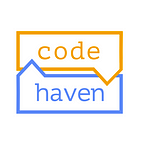Connecting with your students in remote learning
The transition from in-person to remote learning has certainly been tough — there’s no two ways around it. Technology’s unreliability has always been a concern in the classroom, but now there are more serious consequences, like a teacher’s faulty WiFi leaving an entire Zoom-room full of unattended elementary school kids. Those logistical difficulties are clear.
Beyond the baseline technical struggles, though, there lies another pressing problem. Kids aren’t equipped yet with all the communication tools that make life-at-home possible for most of us. You, reading through this blog post, know when to reach out to your professors and supervisors through email; you can Google questions to get answers at a moment’s notice; you can quickly text your friends for a Zoom call if you want some social interaction. But before we became comfortable reaching out and getting our own help — i.e., when we were students in middle- and elementary-school — it was mostly our teacher’s job to identify the social cues that show we need extra help.
We talked to Ms. Canino, one of our Code Haven teachers, about how this particular job of hers has shifted in the transition to Google Meets classrooms. In the physical classroom, she can notice, for example, that a student isn’t smiling as much as they normally are. “I can read that, and do my little teacher investigation to see what’s really going on with so-and-so. But, I can’t do that remotely when the camera’s off.” Other small things, like the inherent energy of the classroom, are hidden behind the screens too.
So, what has she changed as we’ve gone online? “I’m learning other things that can help,” Ms. Canino tells us. For example, “the way [Student A] says ‘good morning’ gives me a great clue as to what kind of day he’s going to have in my class. The way [Student B] comes on the screen tells me a lot about how she’s feeling. And if I don’t hear anything from [Student C], then that’s not good, because that’s one of my happiest students.” Those are the kinds of cues Ms. Canino has been using with her 7th grade students, who she’s never actually seen in person.
She’s used these in-class cues to know when to make herself more available outside of class, and to whom. Emailing with and calling students in the evening hours and weekends has been helpful for getting their motivation up. The kids even call each other to remind their friends about work they have due for different classes.
In all, students are on the fast-track to getting acquainted with technology as a communication tool, instead of just as vehicles for mobile games or Tik Tok. Ms. Canino points at Code Haven as a reason for her students learning more about the “power of technology.” She says computer science education in her classroom is like looking at “Oz behind the curtain” — the kids are finally understanding a wider scope of the applications and websites that their education now fully depends on, and that they can be a part of their creation.
Originally published at https://www.codehavenyale.com.
